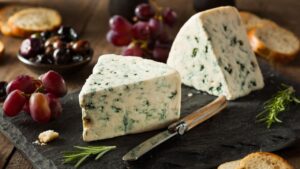Mantis shrimp, also known as stomatopods, are a type of crustacean that inhabit the tropical and subtropical waters of the world’s oceans. Known for their incredible strength and lightning-fast strikes, mantis shrimp are also gaining popularity as a potential food source. In this article, we’ll explore the nutritional value and culinary uses of mantis shrimp, as well as the legal and ethical considerations that come with eating this unique creature.
Can You Eat Mantis Shrimp?
Yes, you can eat mantis shrimp. While they are not a common food source in many countries, mantis shrimp are consumed in various parts of the world, including Southeast Asia, Japan, China, and the Caribbean. Mantis shrimp can be cooked in a variety of ways, including steaming, frying, stir-frying, and grilling.
It’s important to note that not all species of mantis shrimp are edible, and some may be toxic or cause allergic reactions. It’s also important to ensure that the mantis shrimp you consume is obtained from a legal and sustainable source.
Safety Considerations
When consuming mantis shrimp, there are several safety considerations to keep in mind:
Preparation
Mantis shrimp should be thoroughly cleaned and cooked before consumption to minimize the risk of foodborne illness. The shells should be removed, and the meat should be cooked until it is opaque and firm.
Allergies
Some people may be allergic to mantis shrimp, just like with other shellfish. Symptoms of an allergic reaction may include hives, itching, swelling, and difficulty breathing. If you have a known shellfish allergy, it’s important to avoid consuming mantis shrimp.
Toxins
Some species of mantis shrimp may contain toxins, such as ciguatoxin, which can cause food poisoning. It’s important to research the species of mantis shrimp you are consuming and ensure that it is safe to eat.
What Does Mantis Shrimp Taste Like?
The taste of mantis shrimp can vary depending on the species and how it’s prepared. Some people describe the taste as sweet and nutty, while others find it to be more similar to lobster or crab. Mantis shrimp can have a firm and meaty texture, similar to other types of shellfish.
When cooked, mantis shrimp can take on the flavors of the seasonings and sauces used in the dish. In Southeast Asian cuisine, for example, mantis shrimp is often used in spicy curries and stews that are full of bold, aromatic flavors. In Japanese cuisine, mantis shrimp is sometimes served raw as part of a sushi or sashimi platter, allowing the delicate flavors of the seafood to shine through.
Overall, the taste of mantis shrimp can be a pleasant surprise for those who enjoy seafood and are looking for something new and exciting to try. However, it’s important to ensure that you are consuming mantis shrimp safely and responsibly, and to research the species and sourcing of the mantis shrimp you are eating.
The Nutritional Value of Mantis Shrimp
Mantis shrimp are packed with nutrients that are important for overall health and well-being. In fact, they’re often considered a “superfood” due to their high levels of protein, vitamins, and minerals. Here are some of the key nutritional benefits of mantis shrimp:
Protein
Mantis shrimp are an excellent source of protein, containing up to 30 grams per 100 grams of meat. Protein is essential for building and repairing tissues in the body, and is also important for maintaining muscle mass and supporting a healthy immune system.
Omega-3 Fatty Acids
Mantis shrimp are also rich in omega-3 fatty acids, which are important for heart health and brain function. Omega-3s have been linked to a reduced risk of heart disease, stroke, and depression.
Vitamins and Minerals
Mantis shrimp are a good source of vitamins and minerals, including vitamin B12, iron, and calcium. Vitamin B12 is important for maintaining healthy nerve cells and producing DNA, while iron is essential for making red blood cells and carrying oxygen throughout the body. Calcium is important for building strong bones and teeth.
Overall, mantis shrimp are a nutrient-dense food that can provide a range of health benefits. However, it’s important to note that they may also contain high levels of mercury, which can be harmful if consumed in large quantities. As with any seafood, it’s important to eat mantis shrimp in moderation and choose sustainably sourced options whenever possible.
The Culinary Uses of Mantis Shrimp
Mantis shrimp can be prepared in a variety of ways, depending on the culinary tradition and personal preference. Here are some of the most common methods of cooking and preparing mantis shrimp:
Boiling
Boiling is a simple and popular way to cook mantis shrimp. Simply add the shrimp to a pot of boiling water and cook for 2-3 minutes, or until the shells turn pink and the meat is opaque.
Grilling
Grilling is another popular method of cooking mantis shrimp. To grill mantis shrimp, simply brush them with oil and seasonings, then place them on a hot grill for 2-3 minutes on each side.
Stir-Frying
Stir-frying is a common method of cooking mantis shrimp in Asian cuisine. To stir-fry mantis shrimp, heat a wok or skillet over high heat and add the shrimp, along with vegetables and seasonings. Cook for 2-3 minutes, or until the shrimp are cooked through and the vegetables are tender.
Raw
In some culinary traditions, mantis shrimp are eaten raw, either on their own or as part of a sushi or sashimi dish. However, it’s important to note that raw mantis shrimp can carry bacteria and parasites, so it’s important to source them from a reputable supplier and handle them with care.
Common Dishes
Mantis shrimp are used in a variety of dishes around the world. Here are some of the most common culinary uses of mantis shrimp:
- In Southeast Asia, mantis shrimp is often used in spicy curries and stews, as well as stir-fries and noodle dishes.
- In Japan, mantis shrimp is sometimes served raw as part of a sushi or sashimi platter.
- In China, mantis shrimp is often stir-fried with vegetables and sauces to create a flavorful and nutritious dish.
- In the Caribbean, mantis shrimp is sometimes used in soups and stews, as well as fried and served as a snack or appetizer.
Overall, mantis shrimp can be a versatile and delicious addition to many different types of cuisine. However, it’s important to note that the flavor and texture of mantis shrimp can vary depending on the species and how it’s prepared. Some people describe the taste as sweet and nutty, while others find it to be more similar to lobster or crab.
Legal and Ethical Considerations
While mantis shrimp can be a nutritious and flavorful food source, there are also important legal and ethical considerations to take into account. Here are some key factors to consider:
Harvesting and Consumption Regulations
In some areas, harvesting and consuming mantis shrimp is regulated by local or national authorities. It’s important to research the regulations in your area and make sure that you’re obtaining mantis shrimp from a legal and sustainable source.
Environmental Impact
Mantis shrimp play an important role in marine ecosystems, and overfishing or damaging their habitats can have negative consequences for other species as well. If you’re considering eating mantis shrimp, it’s important to choose options that are sustainably sourced and harvested in a way that minimizes damage to the environment.
Ethical Concerns
Some people may have ethical concerns about eating mantis shrimp due to their unique and fascinating characteristics. Mantis shrimp are known for their incredible strength and complex behavior, and some people believe that they deserve protection and respect as a sentient being. If you have ethical concerns about eating mantis shrimp, it’s important to consider alternative food sources and make choices that align with your values.
Conclusion
In conclusion, mantis shrimp can be a nutritious and delicious food source with a variety of culinary uses. However, it’s important to be aware of the legal and ethical considerations that come with eating this unique creature. By choosing sustainably sourced options and handling mantis shrimp with care, we can enjoy this fascinating and flavorful seafood while also protecting the environment and showing respect for all forms of life.





